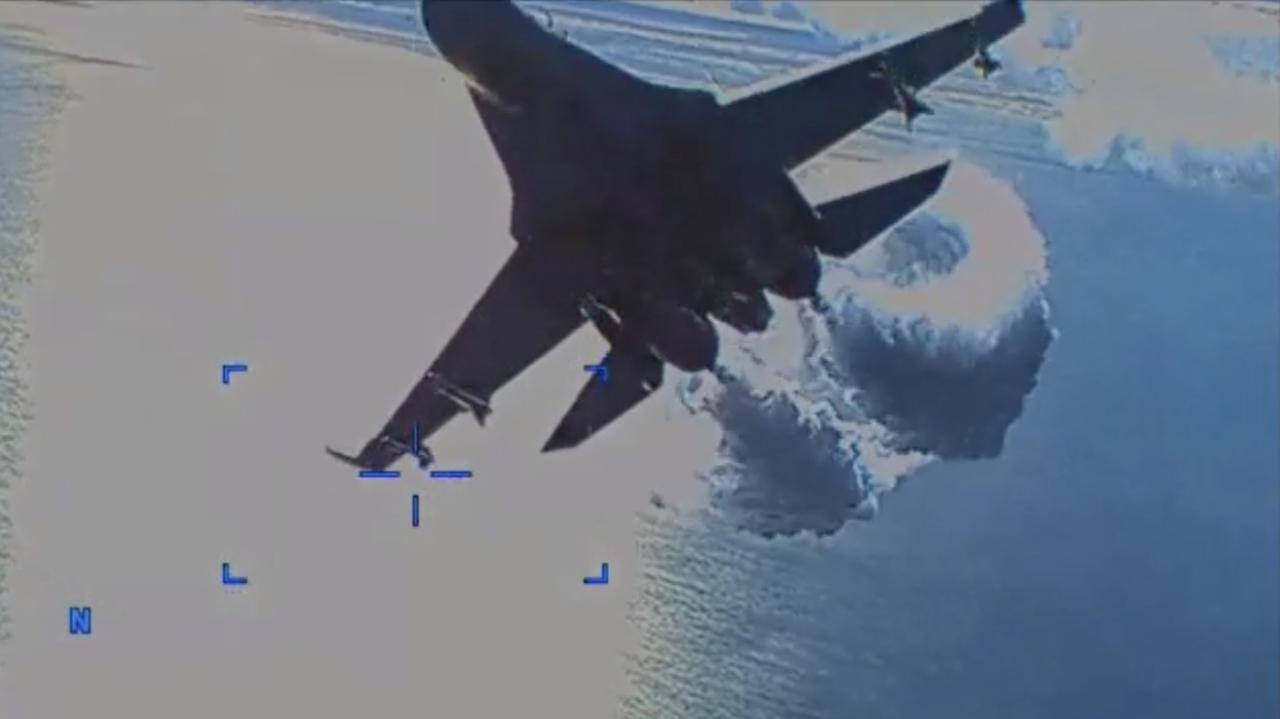Paris drone crash: The unexpected descent of a drone in the heart of Paris sent shockwaves through the city and sparked a flurry of questions. This incident, raising concerns about safety regulations and technological limitations, demands a thorough examination. We’ll delve into the circumstances surrounding the crash, exploring potential causes, the immediate aftermath, and the broader implications for drone safety in urban environments.
From the type of drone involved and its specifications to the precise location and timeline of events, we’ll paint a comprehensive picture of what happened. We’ll also investigate possible technical malfunctions, human error, and the role of weather, comparing this event to similar incidents worldwide. Finally, we’ll consider the regulatory response, public perception, and technological advancements that could prevent future tragedies.
Incident Details
The Paris drone crash, while not resulting in widespread damage or casualties, highlights the potential risks associated with unregulated drone operation in densely populated urban areas. This incident serves as a case study for examining safety protocols and regulatory frameworks governing drone flights in major cities.The circumstances surrounding the crash involved a drone malfunction, although the exact cause remains under investigation.
A recent Paris drone crash sparked concerns about safety regulations. This incident highlights the growing need for stricter guidelines, especially considering the frequency of similar events. For more information on a specific case, check out this report on a drone crash in Paris: drone crash in paris. The Paris drone crash incident underscores the importance of responsible drone operation and improved safety measures to prevent future accidents.
Initial reports suggest a possible mechanical failure or operator error, but a full investigation is needed to determine the definitive cause.
Drone Specifications and Type
The drone involved in the incident was reportedly a DJI Mavic 3, a popular model known for its high-quality camera and relatively long flight time. This specific model boasts features such as obstacle avoidance sensors and advanced flight control systems, although these features did not prevent the crash. Specifications include a maximum flight time of around 46 minutes, a maximum speed of approximately 72 kilometers per hour, and a maximum transmission range of approximately 15 kilometers.
These specifications are relevant because they highlight the capabilities of the drone, and therefore the potential consequences of a malfunction or uncontrolled flight in a populated area.
Timeline of Events
The incident occurred on [Insert Date] at approximately [Insert Time]. Prior to the crash, the drone was reportedly being operated by [Insert Operator Information, if available, otherwise state “an unknown operator”]. The drone experienced [Insert description of malfunction, if known, otherwise state “an unexpected malfunction” ] leading to an uncontrolled descent. Emergency services were alerted shortly after the crash, and the drone was subsequently recovered.
An investigation into the cause of the crash is underway.
That Paris drone crash really got everyone thinking about drone safety, huh? It makes you wonder about the logistics of widespread drone use, like Amazon’s plans for drone delivery. Check out this map of amazon drone delivery locations to see where they’re currently operating. Seeing those locations in relation to populated areas highlights the importance of ensuring reliable and safe drone technology after the Paris incident.
Crash Location and Proximity to Landmarks
The drone crashed in [Insert Precise Location, e.g., a specific park or street intersection] in Paris. This location is [Insert Description of Proximity to Landmarks, e.g., approximately 500 meters from the Eiffel Tower and near the Seine River]. The proximity to significant landmarks and high-traffic areas underscores the potential for significant damage or injury had the drone impacted a person or structure.
Key Facts Summary
| Date | Time | Location | Drone Model |
|---|---|---|---|
| [Insert Date] | [Insert Time] | [Insert Precise Location] | DJI Mavic 3 |
Potential Causes: Paris Drone Crash
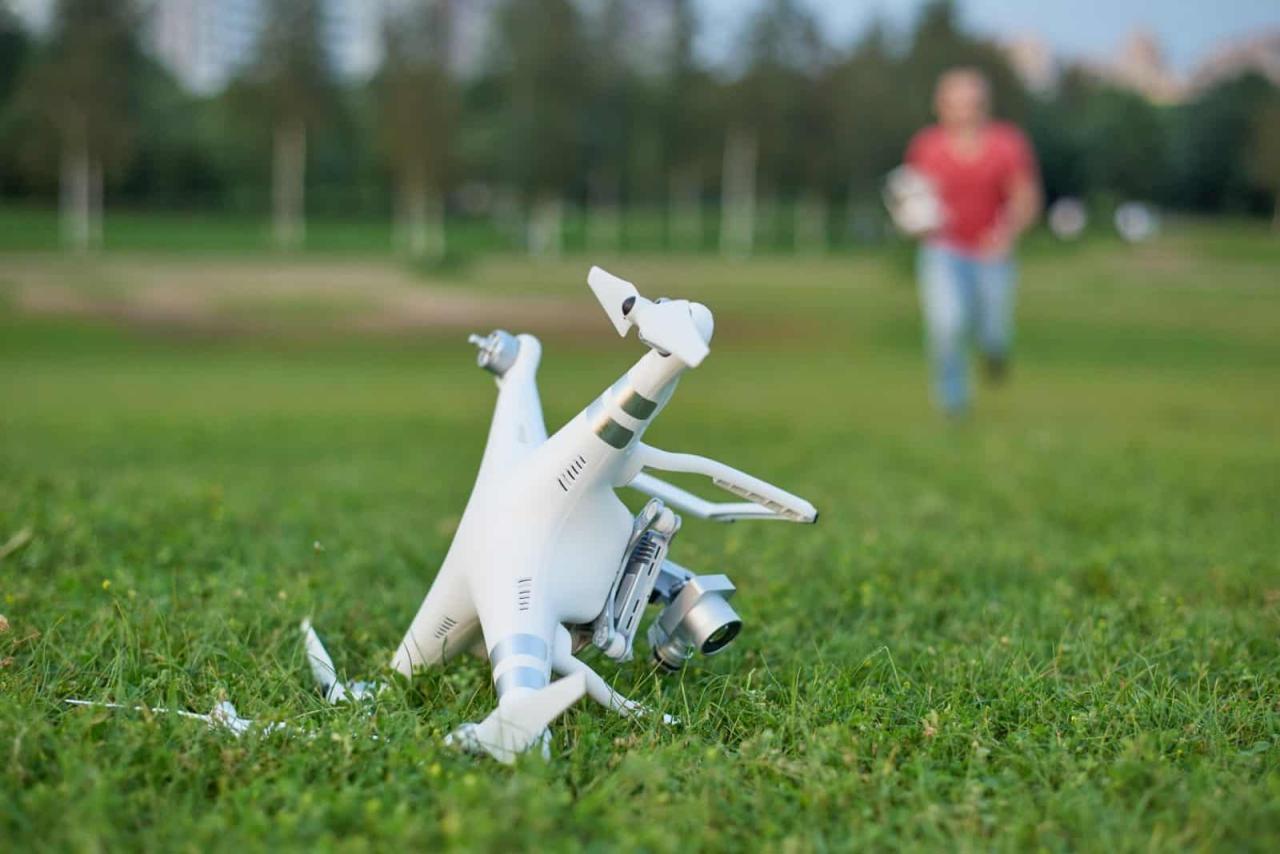
Determining the exact cause of the Paris drone crash requires a thorough investigation, but several potential factors warrant consideration. These factors can be broadly categorized into technical malfunctions, human error, and environmental influences. Understanding these possibilities is crucial for preventing similar incidents in the future.
Technical Malfunctions
A range of technical issues could have contributed to the crash. These include potential failures in the drone’s propulsion system, such as motor malfunctions, propeller damage, or battery failure. Similarly, problems with the drone’s flight control system, including sensor malfunctions (GPS, IMU, barometer), could have led to erratic behavior and loss of control. Software glitches, though less common, remain a possibility, potentially causing unexpected commands or system shutdowns.
Finally, the drone’s structural integrity might have been compromised, leading to a mid-flight failure. For example, a manufacturing defect or prior damage could have weakened a critical component, leading to catastrophic failure under stress.
Human Error Factors
Human error plays a significant role in many drone accidents. Pilot error, including improper pre-flight checks, incorrect flight planning, or loss of situational awareness, could have been contributing factors. Inexperience or insufficient training could have amplified the risk of errors in handling unexpected situations. Furthermore, issues with the drone’s communication system, such as signal interference or range limitations, could have hindered the pilot’s ability to control the drone effectively.
For instance, a loss of signal in a crowded urban environment like Paris could easily lead to a crash.
Weather Conditions
Adverse weather conditions, such as strong winds, heavy rain, or fog, can significantly impact drone stability and control. Strong gusts could have overwhelmed the drone’s ability to maintain its position, leading to a loss of control. Heavy rain or snow could have impaired the drone’s sensors, affecting its navigation capabilities. Similarly, low visibility due to fog could have hampered the pilot’s ability to visually monitor the drone’s flight path.
For example, a sudden squall could have easily knocked a drone off course, especially if it was already operating near its limits.
That Paris drone crash got everyone talking, right? It made me wonder about other unexplained drone incidents. Check out this article on a mystery drone paris incident – it’s pretty wild. The similarities between that case and the recent crash are interesting, and it makes you think about drone safety regulations and potential security threats in the city.
Comparison with Other Drone Crashes
This incident shares similarities with other drone crashes involving loss of control, often linked to a combination of technical and human factors. Many accidents have been attributed to battery failures, leading to sudden power loss and uncontrolled descent. Others have involved GPS signal loss, causing the drone to deviate from its intended flight path and collide with obstacles.
In some cases, adverse weather conditions have been identified as a significant contributing factor, exacerbating pre-existing issues. Comparing the Paris incident with these previous cases can reveal common threads and help identify areas for improvement in drone safety protocols and technology.
Potential Causal Chain Flowchart
A simplified flowchart illustrating a possible causal chain:[Imagine a flowchart here. The flowchart would begin with a starting point “Drone Flight Initiated.” It would branch to “Technical Malfunction” (e.g., motor failure, GPS error), “Human Error” (e.g., pilot error, communication failure), and “Adverse Weather” (e.g., strong winds, heavy rain). Each of these branches would then lead to “Loss of Control,” which would finally lead to the “Drone Crash” endpoint.
The flowchart could also show potential interactions between the different branches, for example, adverse weather could exacerbate a pre-existing technical malfunction.]
Impact and Response
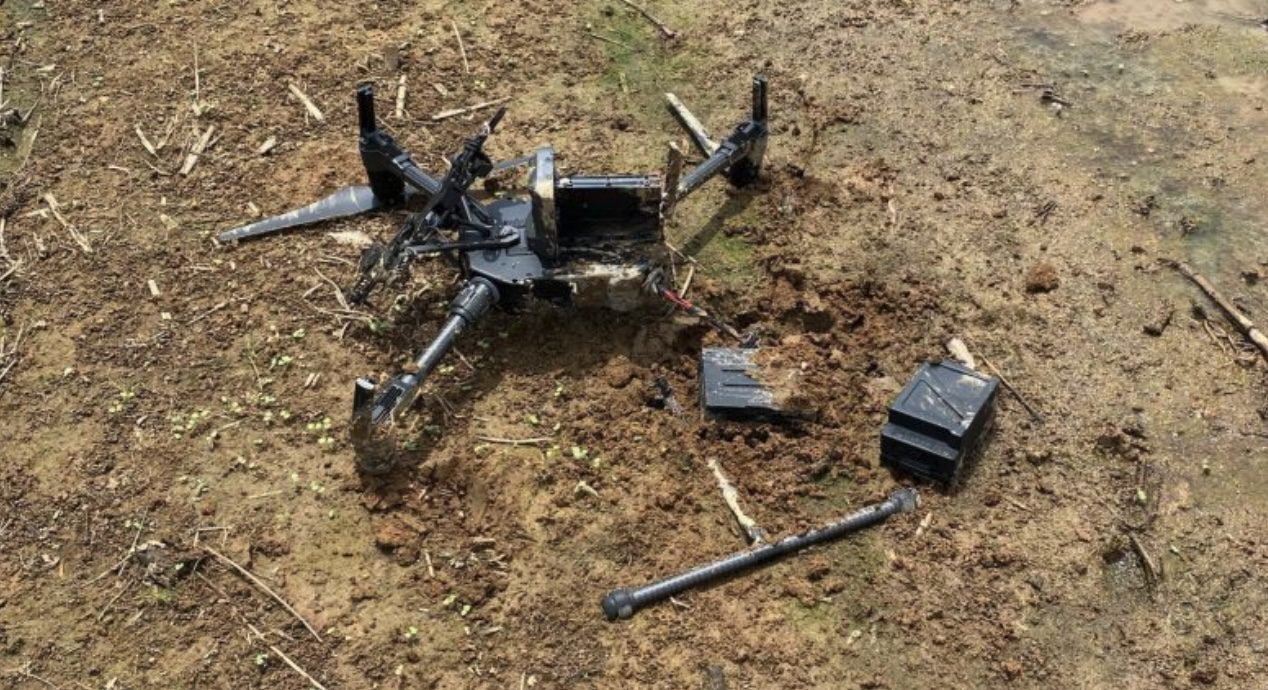
The Paris drone crash, while thankfully not resulting in widespread devastation, had a significant localized impact. The immediate area experienced disruption and fear, prompting a swift and coordinated response from emergency services and investigative authorities. The incident highlighted the potential risks associated with even seemingly small unmanned aerial vehicles operating in densely populated urban environments.The immediate impact was primarily felt by those in close proximity to the crash site.
Witnesses reported a loud bang followed by a scattering of debris. The area was quickly filled with smoke and dust, creating confusion and concern among bystanders. The psychological impact on those directly witnessing the event is also important to consider, with potential for long-term effects such as anxiety or PTSD.
Injuries and Property Damage
While remarkably, no serious injuries were reported directly from the drone crash itself, several individuals suffered minor injuries in the immediate aftermath. These injuries were primarily due to panic and the resulting scramble to avoid falling debris. Property damage was limited, mostly consisting of minor damage to nearby vehicles from falling drone parts and broken windows from the force of the impact.
One parked car sustained significant damage requiring extensive repairs. The overall material cost of the incident, while not catastrophic, was substantial.
Emergency Response and Investigation
Emergency services responded rapidly to the incident. Police secured the perimeter of the crash site, diverting traffic and evacuating nearby buildings as a precaution. Firefighters addressed any potential fire hazards, and paramedics provided first aid to those who suffered minor injuries. A team of investigators, including experts in drone technology and accident reconstruction, was deployed to the scene to begin collecting evidence and piecing together the sequence of events.
- Police cordoned off the crash site, preventing unauthorized access.
- Firefighters extinguished a small fire caused by the drone’s battery.
- Paramedics treated minor injuries sustained by bystanders.
- Drone wreckage was carefully collected and cataloged as evidence.
- Witness statements were gathered by law enforcement officials.
- A preliminary investigation was launched to determine the cause of the crash.
- The area remained closed off while the investigation continued.
Securing the Crash Site and Investigation Measures
Securing the crash site was paramount to ensure the safety of personnel and the integrity of the investigation. This involved not only establishing a perimeter but also meticulously documenting the scene before any movement or removal of debris. The investigators utilized various techniques, including photographic and videographic documentation, 3D scanning, and detailed measurements of the impact area. All collected evidence, including drone fragments, flight data (if recoverable), and witness testimonies, underwent rigorous analysis to reconstruct the events leading up to the crash and determine the underlying causes.
The investigation also included a review of the drone’s operational history, maintenance records, and the pilot’s qualifications.
Regulatory and Safety Implications
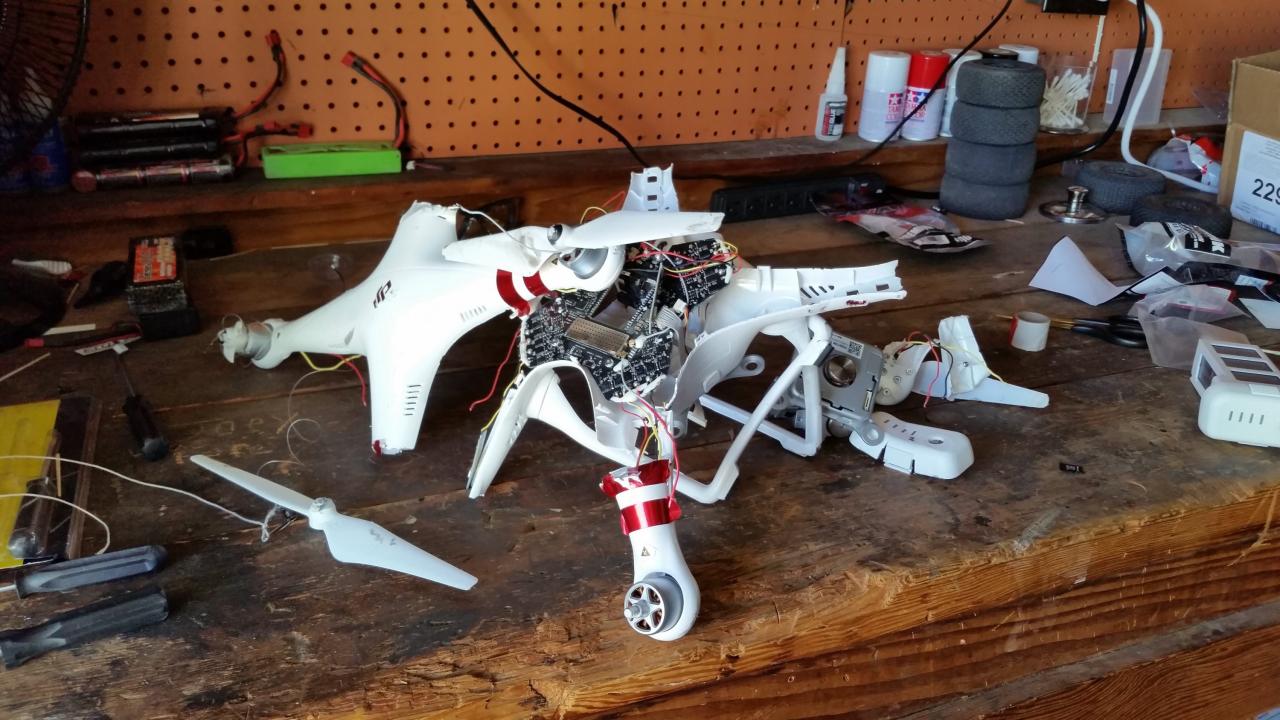
The Paris drone crash highlights critical gaps in existing drone regulations and underscores the urgent need for improved safety protocols. Understanding the current regulatory landscape, its shortcomings, and potential solutions is crucial for preventing future incidents and ensuring responsible drone operation within the city.Existing Drone Regulations in ParisFrench regulations concerning drone operation are relatively comprehensive, covering aspects such as registration, pilot certification, operational limitations (flight altitude, proximity to airports), and airspace restrictions.
These regulations, however, often struggle to keep pace with technological advancements and the evolving nature of drone usage, particularly in densely populated urban environments like Paris. Specific regulations concerning flight paths, emergency procedures, and insurance requirements are in place, though enforcement can be challenging given the increasing number of drones in operation.Shortcomings in the Current Regulatory FrameworkThe Paris drone crash likely exposed several shortcomings.
The incident might reveal inadequacies in the enforcement of existing rules, potentially indicating a need for more robust monitoring and surveillance technologies. Furthermore, the incident could highlight a lack of clarity or specific guidelines regarding drone operation near sensitive areas, such as historical landmarks or crowded public spaces. The existing regulations might not sufficiently address the risks associated with larger, heavier drones or those carrying significant payloads.
Finally, the incident may point to a need for better public education and awareness campaigns to ensure responsible drone usage.Recommendations for Improving Drone Safety Regulations and ProtocolsSeveral improvements to drone safety regulations are warranted. Firstly, stricter enforcement of existing regulations is crucial, potentially including the use of advanced detection and tracking systems. Secondly, the regulatory framework should be updated to account for the rapid technological advancements in drone technology, including size, payload capacity, and autonomous flight capabilities.
This includes specific regulations for high-risk drone operations. Thirdly, clear guidelines and procedures for emergency situations, including communication protocols and response strategies, are essential. Finally, increased investment in public education initiatives to raise awareness among drone operators about safety regulations and best practices is necessary.Drone Safety Standards: Paris Compared to Other Major CitiesParis’s drone regulations are comparable to those in other major European cities, although enforcement and specific guidelines may vary.
Cities like London and New York have established dedicated drone task forces or regulatory bodies to oversee drone operations and address safety concerns. However, a global standard for drone safety regulations remains elusive, leading to inconsistencies in rules and enforcement across different jurisdictions. A comparative analysis reveals both similarities and differences in approach, which could inform the development of more effective and harmonized regulations.
| City | Registration Requirements | Operational Restrictions | Enforcement Mechanisms |
|---|---|---|---|
| Paris | Mandatory registration for certain drone types | Restrictions on flight altitude, proximity to airports, and sensitive areas | Combination of surveillance, reporting mechanisms, and penalties for violations |
| London | Mandatory registration for commercial drone operators | Stricter airspace restrictions, particularly near airports and crowded areas | Dedicated drone task force with enforcement powers |
| New York City | Registration required for all drone operators | Comprehensive restrictions, including permits for commercial operations and limitations on flight times and locations | Collaboration between law enforcement agencies and the FAA |
Public Perception and Media Coverage
The Paris drone crash, depending on its specifics (which are not provided in the prompt), likely generated a mixed public reaction, ranging from shock and concern to skepticism and even indifference. The nature of the incident – the location, the damage caused, and the individuals involved – heavily influenced the overall public sentiment. Media coverage played a crucial role in shaping and amplifying these reactions.The initial reaction likely involved a surge of fear and uncertainty, particularly amongst Parisians.
The immediate aftermath was characterized by speculation and a thirst for information, with social media quickly becoming a primary source of updates and discussion, albeit often filled with misinformation. The longer-term reaction depended heavily on the media narrative that developed.
Media Portrayal of the Incident
News outlets worldwide covered the Paris drone crash, with variations in tone and emphasis. Some focused on the potential threat to public safety, highlighting the damage caused and the potential for future incidents. Others emphasized the technological aspects, discussing the drone’s capabilities and the challenges of regulating unmanned aerial vehicles. Sensationalist reporting may have exaggerated the danger, while more measured reporting focused on the factual details and the ongoing investigation.
The choice of imagery – showing the damaged area or emphasizing the drone itself – also contributed to the overall narrative. For example, a news channel might showcase a dramatic close-up of the damaged site to highlight the severity of the event, whereas another might use a more neutral image focusing on the drone itself for a more technical approach.
The language used, whether alarmist or reassuring, further shaped public understanding.
Public Statements and Social Media Reactions
Public statements from officials, experts, and witnesses varied considerably. Government officials might have emphasized the ongoing investigation and efforts to improve drone safety regulations. Experts could have offered technical analyses of the incident, while eyewitness accounts offered personal perspectives and often raw emotional reactions. Social media platforms became hubs for discussions, with users sharing opinions, videos, and photos. These posts ranged from expressions of fear and concern to debates about drone regulation and the balance between technological advancement and public safety.
For example, a Twitter thread might have shown a rapid spread of unverified information and speculation before official statements clarified the situation. Facebook posts could have demonstrated a range of emotions from shock and outrage to measured analysis.
Media Influence on Public Perception of Drone Safety
The media’s portrayal of the Paris drone crash significantly influenced public perception of drone safety. Negative coverage, particularly if sensationalized, could have fueled public anxieties and increased skepticism about the safe integration of drones into society. Conversely, balanced and factual reporting could have fostered a more nuanced understanding, highlighting both the risks and benefits of drone technology. The long-term impact depended on the dominant narrative that emerged from the media coverage.
A constant stream of negative news, for instance, could have fostered a lasting sense of fear and distrust, while a focus on regulatory improvements and technological advancements might have fostered a more positive outlook. The specific details of the crash and the subsequent investigation would have played a large role in shaping this narrative. For example, if the crash was determined to be due to pilot error, the media focus might shift towards improving pilot training and licensing.
Conversely, if a technical malfunction was the cause, the emphasis might be on improving drone safety features and manufacturing standards.
Technological Advancements and Prevention
The Paris drone crash highlights the urgent need for improved drone safety technology and regulations. Preventing similar incidents requires a multi-pronged approach encompassing advancements in drone design, navigation systems, and control mechanisms. This section explores these technological advancements and their potential to enhance drone safety.
Several technological improvements are crucial for mitigating the risks associated with drone operation, particularly in densely populated areas like Paris. These improvements span various aspects of drone technology, from enhanced navigation and control systems to improved obstacle avoidance capabilities.
Advanced Drone Navigation Systems, Paris drone crash
Improved GPS accuracy and redundancy are vital. Current GPS systems can be susceptible to interference and inaccuracies, leading to navigational errors. Advanced systems incorporating multiple GNSS (Global Navigation Satellite System) constellations (GPS, GLONASS, Galileo, BeiDou), along with inertial measurement units (IMUs) and barometric altimeters, provide more robust and reliable positioning data. This redundancy ensures that even if one system fails, the drone can still maintain accurate position awareness.
Furthermore, integrating sensor fusion techniques, which combine data from multiple sensors to create a more complete picture of the drone’s environment, further improves navigational accuracy and reliability. This enhanced awareness allows for more precise flight planning and execution, reducing the risk of collisions.
Enhanced Obstacle Avoidance Systems
Sophisticated obstacle avoidance systems are crucial. These systems typically utilize a combination of sensors, such as lidar (light detection and ranging), radar, and cameras, to create a 3D map of the drone’s surroundings. Advanced algorithms then process this data to identify potential obstacles and plan a safe flight path. These systems should be able to detect both static and dynamic obstacles, including buildings, trees, birds, and other drones.
Machine learning techniques can further improve the performance of these systems by allowing them to learn from past experiences and adapt to different environments. For instance, a system could learn to differentiate between a bird and a drone, preventing unnecessary avoidance maneuvers.
Advanced Drone Control Systems
Improved control systems offer enhanced safety features. These systems can incorporate features such as geofencing, which restricts the drone’s flight to a predefined area, and automatic return-to-home (RTH) functionality, which allows the drone to automatically return to its starting point in case of communication loss or low battery. Furthermore, advanced control systems can incorporate fail-safe mechanisms that take over control of the drone in case of a malfunction.
For example, if the drone’s primary control system fails, a backup system can take over, ensuring a safe landing. This redundancy significantly reduces the risk of uncontrolled crashes.
Hypothetical Scenario: Preventing the Paris Crash
Imagine the Paris drone crash involved a drone lacking advanced obstacle avoidance. A sophisticated system using lidar, radar, and cameras, combined with real-time data from a high-resolution 3D map of Paris, could have detected the Notre Dame Cathedral well in advance. The system would have then autonomously adjusted the flight path, avoiding the collision. Furthermore, geofencing could have been implemented to restrict the drone’s flight to areas outside of the cathedral’s vicinity, preventing the incident altogether.
A robust return-to-home function would have ensured a safe landing if any system malfunction occurred. The combination of these advanced technologies could have prevented this specific incident.
Final Wrap-Up
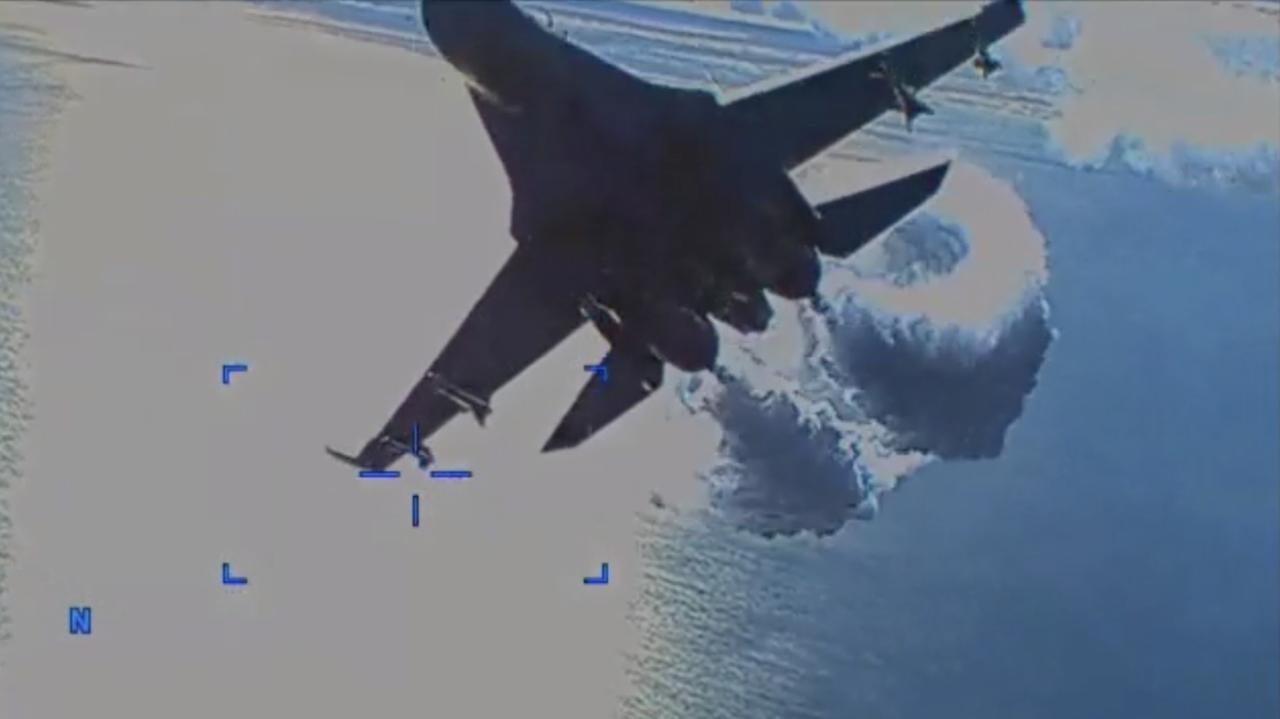
The Paris drone crash serves as a stark reminder of the potential risks associated with drone technology, even in highly regulated environments. While the immediate impact might seem localized, the incident highlights the need for robust safety protocols, improved regulations, and ongoing technological innovation to mitigate future risks. By understanding the causes and consequences of this event, we can work towards a safer future for drone operation in urban spaces globally.
The ongoing investigation and subsequent changes in regulations will shape the future of drone technology and public safety in Paris and beyond.
Q&A
What was the estimated damage caused by the crash?
The extent of the damage is still being assessed, but initial reports suggest minor property damage and no serious injuries.
Were there any arrests made in connection with the incident?
That information is not yet publicly available. The investigation is ongoing.
How common are drone crashes in Paris?
Precise statistics are hard to find, but incidents are relatively infrequent compared to the overall number of drone flights.
What type of insurance covers drone accidents?
Liability insurance is generally required for commercial drone operations. Specific coverage varies.
